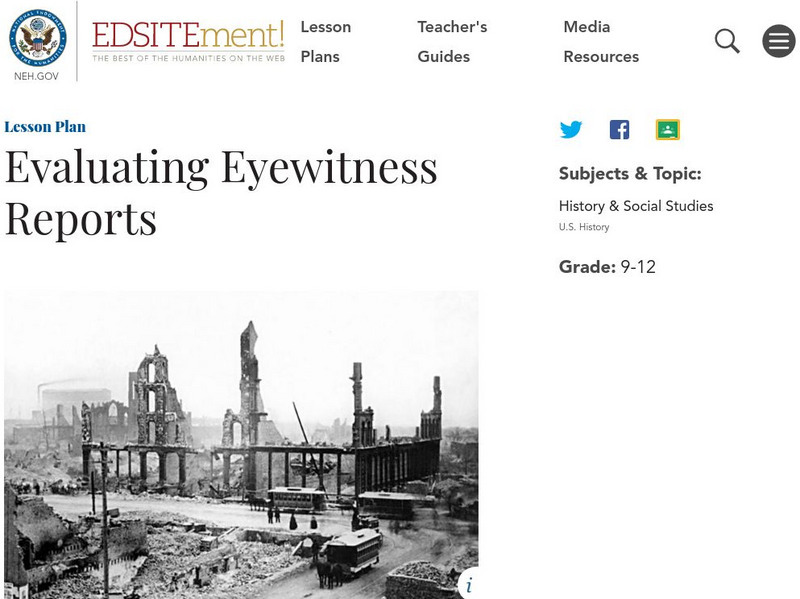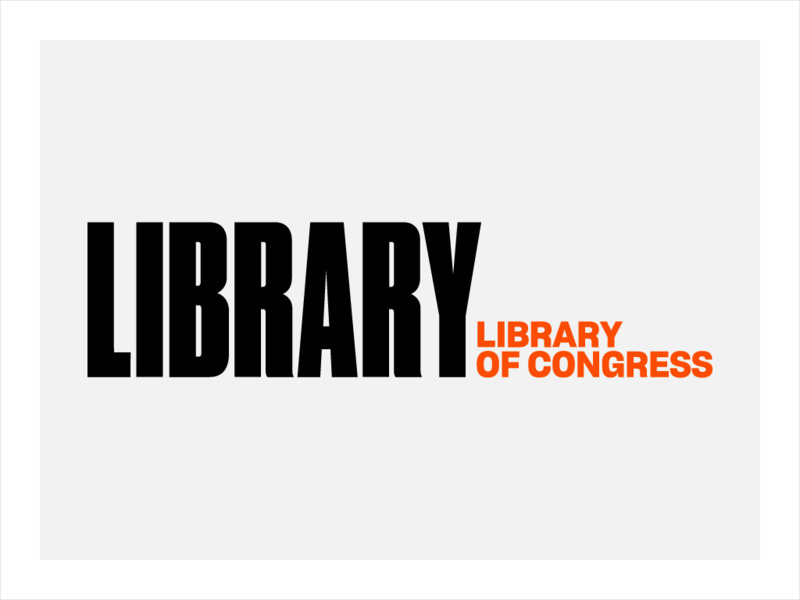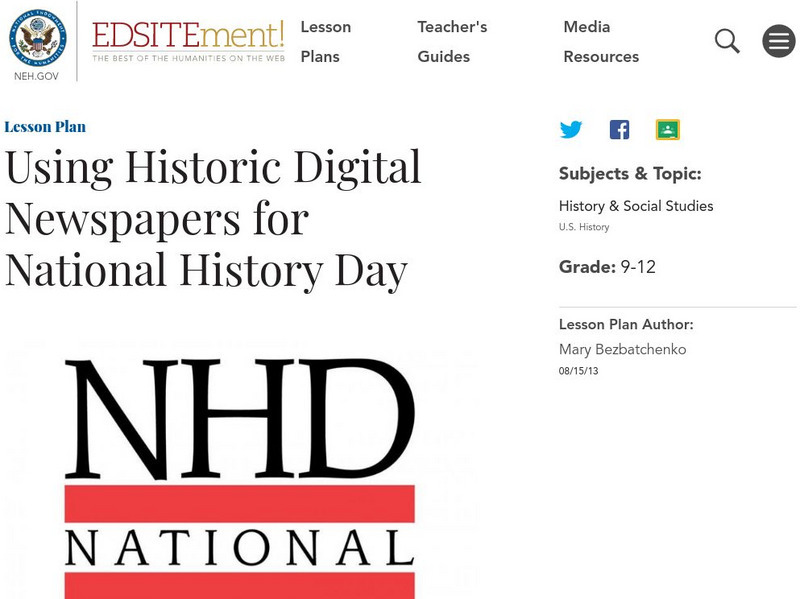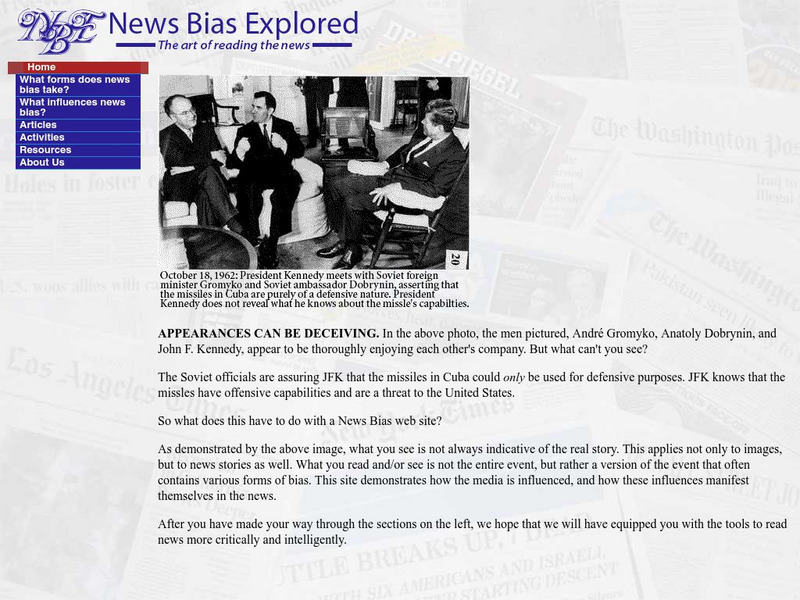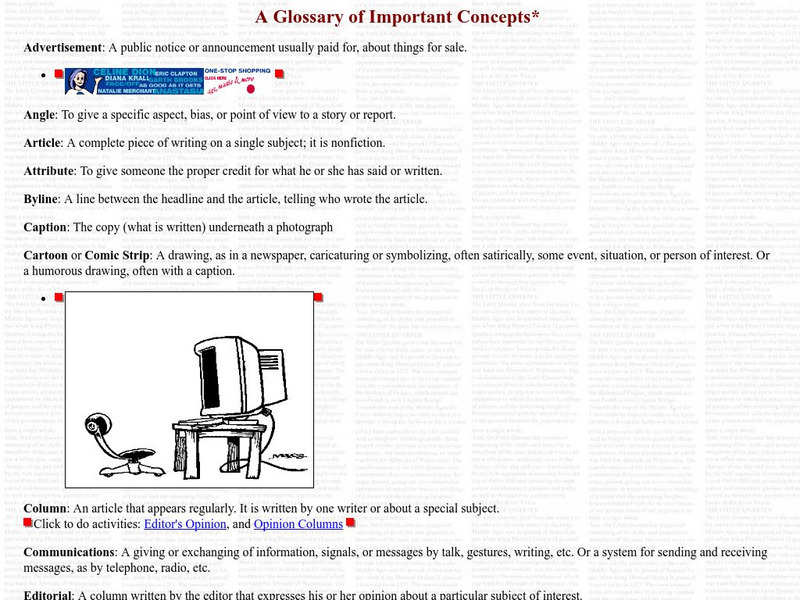National Endowment for the Humanities
Neh: Edsit Ement: Evaluating Eyewitness Reports
In this lesson, students practice working with primary documents by comparing accounts of the Chicago Fire and testing the credibility of a Civil War diary.
Columbia University
Leaks Necessary to News Reporting
Anonymous sources are a troubling fact of life for journalists and news consumers, according to this article that quotes some of the profession's heavy hitters.
Library of Congress
Loc: Teachers: Using Primary Sources
The Library of Congress provides teachers with a framework that will help integrate primary sources into all areas of the curriculum. Sections include "Why to Use Primary Sources," "Citing Primary Sources," and "Finding Primary Sources."
Library of Congress
Loc: Creating a Primary Source Archive: All History Is Local
A lesson plan where students collect local primary documents and examine the interplay between national, state, local, and personal history.
Google
Google News Archive
Access thousands of primary sources documenting historic events with this Google news archive tool.
Digital History
Digital History: An Intro to the Study of History: The Four Questions [Pdf]
How does one study history? Find four basic questions that historians use to examine events in an effort to explain them and put them in historical context. By examining the Battle of Lexington and Concord, students can practice using...
Digital History
Digital History: Social Class in Colonial America [Pdf]
By examining primary sources such as diaries and tax records, and a chapter from a secondary source, learn about the social classes apparent in colonlial America. Suggested student exercises guide crtitical thinking assessment of the...
Library of Congress
Loc: Slavery in the United States: Primary Sources
This lesson introduces students to primary sources- what they are, their great variety, and how they can be analyzed. The lesson begins with an activity that helps students understand the historical record. Students then learn techniques...
Library of Congress
Loc: Oral History and Social History
This lesson presents social history content and topics through the voices of ordinary people. It draws on primary sources from the collection, American Life Histories: Manuscripts from the Federal Writers' Project, 1936-1940.
Library of Congress
Loc: 1900 America: Primary Sources and Epic Poetry
To better understand the United States at the end of the nineteenth century, this interdisciplinary activity integrates analyzing historical primary resources with literary analysis. Students work in groups and express themselves...
Georgetown University
Georgetown University: News Values
Learn the essential elements of every good news story from Gerald Lanson and Mitchell Stephens, authors of Writing and Reporting The News, who emphasize eleven judgments that journalism students should make when evaluating newsworthiness.
Indiana University
The Center on Congress: An Introduction to Primary Sources
Discover the difference between primary and secondary sources, then take a quiz to test your knowledge.
National Endowment for the Humanities
Neh: Edsit Ement: Using Historic Digital Newspapers for National History Day
In this lesson plan, students will consider "Using Historic Digital Newspapers for National History Day." The plan includes worksheets and other student materials that can be found under the resource tab.
US National Archives
Nara: History in the Raw
Site offers excellent reasons to approach history by using primary documents -- diaries, letters, drawings, and memoirs. Also gives teachers suggestions on where to find great sources.
University of Michigan
News Bias Explored: The Art of Reading the News
Real-life examples, interactive headline and image games and brief explanations make this an attractive site for learning to recognize media bias.
Cynthia J. O'Hora
Mrs. O's House: History Facts and Fictions
There are many versions of historical events, people, and places. This PBL offers an opportunity to students to actively explore a disputed event or urban myth to decide which version they will argue in favor of with supporting evidence.
Cynthia J. O'Hora
Mrs. O's House: Mystery Object Challenge
With a brief story and photo of an image, students will do some digging to figure out how old the object pictured is and the history behind it.
Gilder Lehrman Institute of American History
Gilder Lehrman Institute: History Now: When the Past Speaks to the Present: Thomas Jefferson,sally Hemings
[Free Registration/Login Required] An article about the need for careful interpretation of historical sources, especially in the area of slavery.
US National Archives
National Archives: Was Reconstruction a Revolution?
Students will use primary sources to answer the question "Was Reconstruction a Revolution?". Included are discussion questions, worksheets, primary sources, extension activities, and additional resources. [PDF]
Other
George W. Bush Presidential Library: Teaching Primary and Secondary Sources
This comprehensive lesson plan provides a fact sheet, reusable worksheets, source scenarios, and assessments.
Other
English Global Village: Glossary of Journalism Concepts
This page contains definitions for words related to journalism.
Other
Journalist Express: Homepage
This site from Journalist Express lists more links than you could visit in a lifetime. This is another site to save for future reference.
Other
Historic Newspapers: Brief History of Newspapers
Site gives information on the origin of the newspaper in America and its development through the Industrial Revolution.
Other
The Center for Public Integrity: Home Page
Excellent site for journalists and others who feel that it is their beat to keep a watchful eye on the political culture of the country through investigations and analyses of public service.
